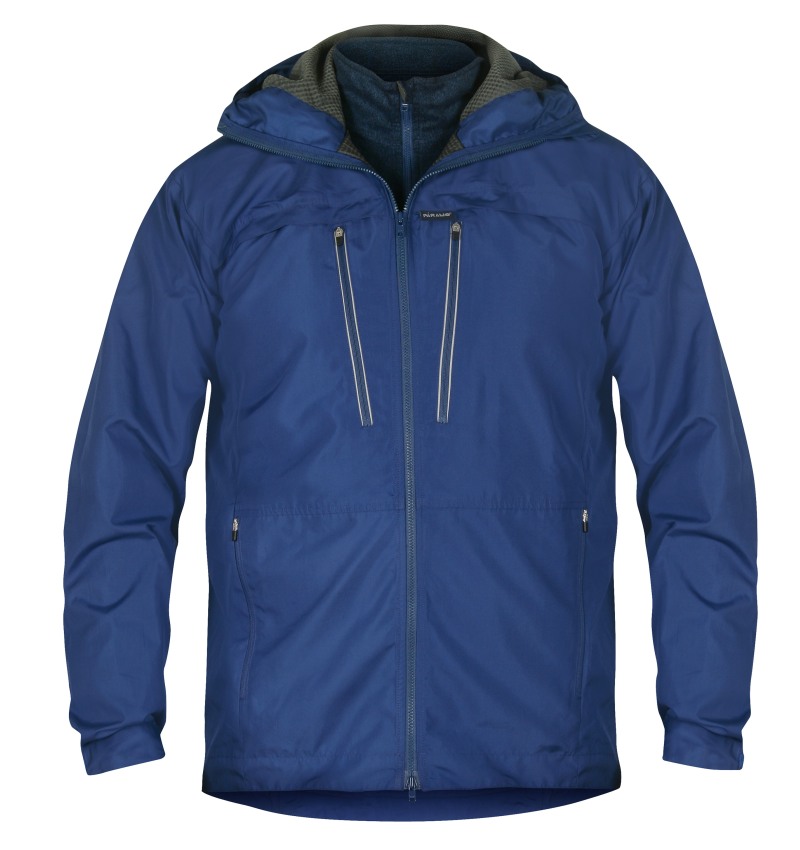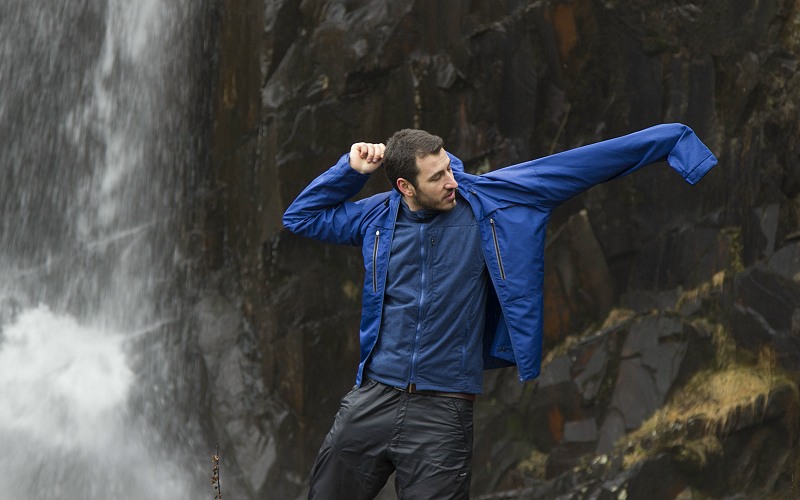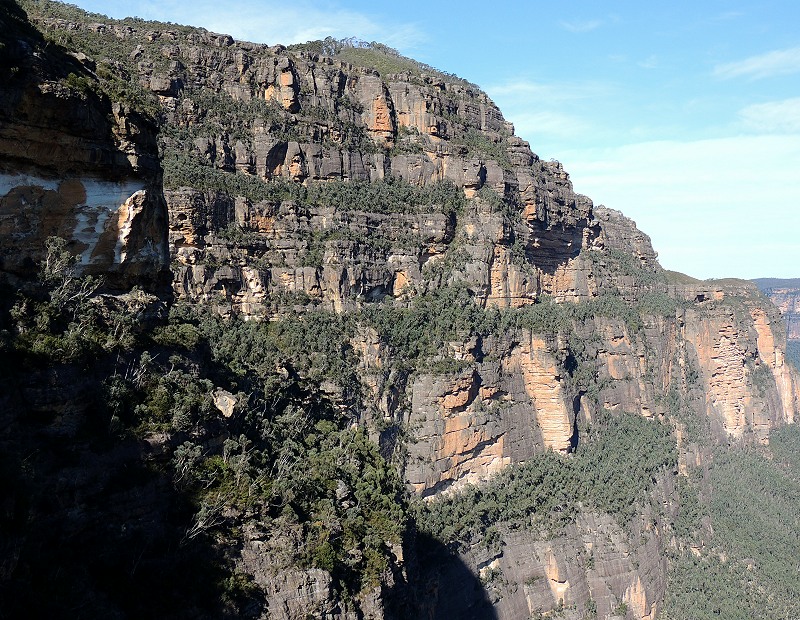Topic
Review: Paramo Directional Clothing, Bentu Fleece and Jacket
Forum Posting
A Membership is required to post in the forums. Login or become a member to post in the member forums!
Home › Forums › Gear Forums › Gear (General) › Review: Paramo Directional Clothing, Bentu Fleece and Jacket
- This topic has 3 replies, 3 voices, and was last updated 7 years, 4 months ago by
 Roger Caffin.
Roger Caffin.
-
AuthorPosts
-
Oct 16, 2017 at 6:05 am #3497002
Roger Caffin
Introduction – Paramo and Nikwax
Paramo is an interesting UK company dedicated to ‘Directional Clothing’. Their concept is that their fabrics do not just block water (as in ‘waterproof’) or passively pass water through (as in ‘breathe’), they actually ‘direct’ both liquid water and water vapour outwards. In this they could be said to go past the basic ‘softshell’ concept.
It must be understood that their clothing has evolved in the UK, with the distinctive UK weather. Theirs is not the ‘always sunny American Sierra summer’, or even the totally wet American North-West. A ‘fine day’ in the UK might mean you are getting no more than a few millimetres of precipitation per hour – hardly worth even noticing really. You can of course get ‘bad weather’ in the UK: the Yorkshire men talk about a ‘lazy wind’, which means that it does not bother going around you. It goes straight through you instead. We were walking the Pennine Way in the middle of summer one year – and had about 100 mm of snow overnight. The snow melted during the next day, which was sunny.

Bentu jacket over Bentu fleece, photo by ParamoOne could go on, but hopefully you begin to get the idea. In the UK you need clothing which can both shed water in moderate volume and yet really breathe when you are working hard, to a degree undreamt of by the makers of membrane fabrics. The breathing has to work when the outside world is cold and damp, which is where membrane fabrics singularly fail in my experience. A side benefit is that their clothing does not get wet on the inside surface in the way a membrane fabrics do. Trust me, sweating up a hill inside a membrane jacket at 2 C in pouring rain can be really nasty. As soon as we stopped for a rest my teeth were chattering. We have all heard of membrane fabrics which are, somewhat laughably, guaranteed to keep you dry but which totally fail. Paramo clothing actually can keep you dry if you are working, although the outside <i>surface</i> of their fabric might look a bit damp.
Actually, the whole concept of ‘softshell’ clothing is not new; it is quite antique. The original softshell clothing was made from tightly-woven greasy wool fabric. Shepherds and Gentry both wore cloaks or capes made of this, hundreds of years ago (and more). The outside of the cape got damp, but your warmth inside drove the moisture back out. This should be contrasted with the heavy PVC slickers worn these days by boaties (or yachtsmen). They are designed to be worn while you are getting a few tons of water dumped on your head a regular intervals – while you are not working hard enough to keep the insides dry. Two very different applications.
The problem today is that the idea of wearing greasy wool clothing has become a bit unacceptable. For a start, it is very heavy; it is also usually expensive. We need something which will do the same thing but with modern synthetics. Enter Paramo clothing and their use of Nikwax as a <i>sort of</i> Durable Water Repellent, to emulate the effect of greasy wool. But with modern fabric technology, you can go further: the inner surface of many Paramo fabrics is designed to suck water off your skin and pump it to the outer surface of the fabric, while the outer surface is designed to spread the water out for evaporation, using the heat from your body. Yes, these fabrics are for active wear, not for playing traffic cop in the middle of an intersection. The secret behind all this is that the same (UK) person developed both Nikwax and Paramo fabrics – to work together.
This concept is demonstrated in this ‘review’ by the Bentu jacket and fleece. They both use the special Paramo fabrics, treated with Nikwax.
Disclosure: I did my PhD in London (UK), and got to experience the full range of UK weather there for several years. On returning from a walk with my wife and one-year-old baby across the Dartmoor Moors one Bank Holiday I was nearly lynched by fellow graduate students at the Uni: after three days of nearly perfect weather on the Moors I had actually got a suntan! This was considered unforgivable in London. UK readers will understand.
Membrane Fabics and DWR, for comparison
How does this compare with a typical membrane fabric? The mechanisms and consequences are very different. In a membrane fabric you are relying, at least in theory, on a thin membrane to block the water. The trouble is, that same membrane also blocks any air movement. Despite all the claims by various vendors that their membrane is ‘breathable’, it is not. Breath, or air, will NOT go through. To be sure, you will get some movement of water vapour through the membrane, but it is a pathetically small amount compared to what you get with a non-membrane fabric – or how much you sweat off.
It is well-known that people get sweaty backs when they are climbing a hill with a pack on their back. This is especially so if they are wearing a membrane jacket – in fact they can get sweaty all over inside their clothing. The reason is simple: the sweat can’t get out. But it can get much worse than just ‘sweaty’. If there is a strong wind outside and an air temperature of 2 C, you find that the sweat which is building up inside your jacket condenses on the inside of the cold fabric, and suddenly you transition to having very cold wet clothing inside your ‘guaranteed waterproof’ jacket. It happens all the time, and it can be rather uncomfortable. Then you stop for a rest – in your wet clothing at 2 C, and that can be dangerous (or worse).
To be sure, the jacket manufacturers add things like pit zips to try to compensate. They don’t work, and the fact that they have to add such large zips is really an admission that the fabric is creating a ‘sweat box’. The problem is not jacket-design, it’s fabric-design.
Of course, if you could keep the outside surface of the membrane from wetting out, there could be a bit more vapour transmission, but the surface fabric absorbs the rain. Then you have a water layer on top of the membrane. So we have Durable Water Repellent treatments on the surface fabric, to try to keep the fabric and the membrane under it dry. It has been remarked that if you have a really good DWR treatment, you might not even need the membrane. Such a fabric is actually heading towards the softshell and greasy wool idea.
The trouble with DWR treatments is that they wear off more quickly than we would like. You can of course buy some after-market DWR chemicals and try to refresh the DWR aspect of your jacket. This works for a short while – but not all that long.
I had better add two small cautions here. The first is simple: there are two common DWR treatments available in the USA: silicone and fluorocarbon. What many do not know is that trying to mix fluorocarbons and silicone DWR treatments is a total disaster. They simply will not bond to each other, and once you have made the mistake of mixing them, recovery is very, very difficult. I will add that the silicone DWRs have an extremely short life compared to the fluorocarbons: they either rub off or wash off in the rain. The only use I see for silicone DWR is to freshen up the surface of silnylon fabrics, as in tents or ponchos.
The bigger caution is that the fluorocarbon DWRs are hazardous. They come in two forms: C6 and C8, the numbers being the length of the carbon chains in the active ingredient. Industry has largely phased the C8 version out because of the very clear toxicity, and gone to the C6 version. But the harsh reality is that the C6 version is almost as bad as the C8 version. Continued exposure can be bad for your health. This is causing much upset in the industry.
Nikwax is very secretive about what goes into their proofing agent. My understanding is that it is a combination of a wax (beeswax?) and EPDM rubber. Neither is dangerous. I have not been able to get adequate technical information from Nikwax themselves so far about their secret recipe.
To the best of my understanding, you should not try mixing either DWR with Nikwax either. They are very different animals. I have seen claims that you can put Nikwax on Goretex and some other membrane fabrics successfully. Probably so, but I would not try putting a fluorocarbon or silicone DWR over the top of Nikwax later on.
The Bentu fleece and jacket

Bentu jacket(410 g for medium) over Bentu fleece (350 g for medium), waterfall not rain, photo by ParamoYou could of course use just one of these two items. We are reviewing them together because they are designed as a matched pair.
The jacket is made from the Paramo ‘Windproof’ fabric, and is silky-soft. You would think it is just uncoated synthetic, but it does shed the rain. In addition, the hood and shoulders are lined with the Paramo Mesh Pump Liner fabric. This lining is a rather neat idea for keeping you dry: the mesh liner keeps the thin outer fabric off your skin, so there is now a tolerable temperature gradient between your skin and the outside world. Even if the outer fabric gets a shade damp, the mesh liner stays dry (from the warmth coming off your body) and continues to insulate you and siphon water away from your skin. You don’t get freezing cold wet fabric on your skin.

Bentu jacket over Bentu fleece, Mt Banks, Grose Valley, NSW, Australia, photo by Brian Fox
It may look sunny in the photo, but it was mid-winter and the wind was cold! I have the jacket open for the photo, to show the fleece under it. The jacket hood is adjustable via a draw cord at the back, there are several pockets, there’s a hem drawcord, the zip is openable and two-way, and the cuffs can be done up. If you can’t find the hem drawcord adjustment – look inside the pockets! It is actually just visible in the first photo, inside the jacket to the right of the body. No dangling cords ready to catch on scrub. It was a bit breezy with the jacket open, but when I zipped it up it was quite snug.
Obviously there is going to be a drawback to all these wonders. Yes, the jacket weighs just over 400 g for a medium, which is a lot more than a simple silnylon jacket or poncho. In the photo above I am wearing it over the Bentu fleece early in the morning in mid-winter. As I said, a nice sun, but the wind was ‘a bit on the cool side’. We were about to drop over the edge of the cliff to do a long traverse across the 600 m high cliff face: more on that later.

Bentu fleece without the jacketThis is the fleece jacket by itself on another trip in mid-winter, after lunch when the temperature had climbed up a bit (it may have reached two digits C rather than one – maybe). Yes, I was getting a bit warmer and had opened the front up. I deliberately let myself start sweating slightly to see what would happen, but the fleece did not seem to get wet at any stage. A lot more can be said about the fleece, because it really is a bit ‘different’. The fabric is called a ‘fleece’, but it’s rather like a chamois leather to the touch. Quite strange. The medium weighed about 350 g.

Through the scrub running mid-height across this face, photo by Brian FoxI thought the fabric might be a bit fragile, so I took it through some of our Australian scrub to see what it would do. Those who know our Blue Mts scrub might think this was a bit of a harsh test. The route was along the green scrub line across the middle of the face here. Not surprisingly, it is known as ‘The Traverse of the Gods’, and it is not well-known. The cliff face is 600 m high at the peak and the route was a bit narrow in places. Some rock climbing was required as well. Rather to my surprise, the fleecy surface seemed to slide off sticks and thorns and rocks and stuff, rather than catch. The only part which has shown any signs of wear was the embroidered Nikwax fleece badge on my right shoulder: it got slightly ‘fluffy’ from the abrasion. It was probably bought in. Well, tough.
The fleece jacket is not lined although the large pockets are made with the Mesh Pump liner fabric. It has no hood: you use the lined jacket hood. Again, there are several large pockets. The ‘map pocket’ at the chest is almost invisible to the casual observer: the seam just disappears. The zip at the front is double-ended and can be separated. I am not sure when I might want to undo it from the bottom edge upwards, but the separation is of course essential.
We washed the fleece to see how fast it would dry. It seemed to hold a fair bit of water even after spinning, but it did dry at a reasonable speed. I think the idea is that if you use it correctly it won’t get very wet in the field.
Conditions for Use
I would not try to use the Bentu jacket as a substitute for my poncho in our Sydney wet weather. One major reason for this is that my poncho also covers my pack, and that is valuable. A second reason is that a Sydney downpour can be a bit like the wave breaking over a boatie I mentioned earlier. We do get severe flooding at times. But for light drizzle – no worries. On the other hand, the combination might be useful in our snow fields, although I would definitely need a light warm layer underneath the fleece. It’s a deliberately ‘light’ combination not meant for snow use: Paramo does have heavier combos.
The fleece by itself is warm enough for cold dry weather, with the option of adding the jacket if it was a bit drizzling and really cold or a bit windy. Alpine conditions outside the snow season would certainly suit the combination – as would the typical UK weather. It would be utterly too hot for the Australian summer, but so is most anything.
My wife likes the blue colour. She also liked the fleece and the jacket. I might end up losing them. Paramo and others please note: convincing my wife is hard.
Oct 16, 2017 at 12:07 pm #3497041Nice review.
A bit of a rambling response, focusing on the shell rather than the fleece. I feel that it’s the shell that’s the interesting part of the Paramo system.
As a Brit I do have look at Paramo from time to time. And I always end up leaving it on the rack. Same with the similar Buffalo shells. I like the concept, but in practice I can’t see how it would work for me.
Although the shell concept does has its fans, you rarely see it being used on the UK hills in truly bad weather. On the forums, for every good report you see a bad experience. Talking to retailers, it seems that most customers are relatively casual dog-walkers and ramblers who only go out for short trips in moderate conditions – as you say, it does very well in showers where it would be much nicer to wear than a hard-shell.
But for me, the big problem is that it only seems to work in a relatively narrow range of conditions. Too hot and it’s heavy and bulky in your pack. Too wet and the summer weights can get dangerously overwhelmed, so you really have to carry a rain shell as well. And you pretty much need summer and winter-weight versions too, while with my current layering system I can use most elements year-round.
Additional problems:
- Needs regular and careful maintenance, so not good for long trails
- Not exactly a budget purchase
- Often rather badly cut, and in ho-hum colours.
If you have a large quiver of garments so you can pick and choose according to conditions, Paramo shells may have a place in your wardrobe. If you prefer a simple system that will see you through in rain and shine, I’m not convinced it’s so useful.
If anyone has used the gear and thinks I’m wrong, I’d be glad to be corrected – I’m no lover of hard-shells…
As a footnote, I recently bought my first bit of Paramo – a “directional” grid baselayer – in a sale. It’s not been a success – if anything it seems to be holding moisture on its inner face rather than wicking effectively, making it cold and clammy. An over-hyped bit of kit, I feel.
Though I suspect the pump-liner concept does work – I have an old Rab Vapour Rise jacket which uses the same idea, and the inside is dry even when the outer is wet. Problem is that I never really figured out what the garment was for. It kept off mild showers, but wasn’t very warm or windproof. The clingy liner made it quite hard to get on, and it was quite heavy and bulky for what it offered. I think I’d have the same issue with a Paramo shell.
Oct 16, 2017 at 3:26 pm #3497061Thanks for the article, it is good to read more experiences with this system. I will be trying out a similar system again as it is finally getting cold around here again. Using an full zip epic coated jacket, a 100 wt fleece and an OR windproof hat. If it is a downpour for a long time I can always bring out the taro/poncho.
Oct 16, 2017 at 8:44 pm #3497132Well, to be honest, both Sue and I rely on our MYOG silnylon ponchos most of the time.
https://backpackinglight.com/myog_mntn_poncho/
But that is because when it rains here around Sydney, it buckets. Wrong conditions for a softshell. When it is just cold and windy, the Bentu works well. You have to match your clothing to the conditions.Cheers
-
AuthorPosts
- You must be logged in to reply to this topic.
Forum Posting
A Membership is required to post in the forums. Login or become a member to post in the member forums!
HAPPENING RIGHT NOW (February 11-21, 2025) - Shop Hyperlite Mountain Gear's Biggest Sale of the Year:
Our Community Posts are Moderated
Backpacking Light community posts are moderated and here to foster helpful and positive discussions about lightweight backpacking. Please be mindful of our values and boundaries and review our Community Guidelines prior to posting.
Get the Newsletter
Gear Research & Discovery Tools
- Browse our curated Gear Shop
- See the latest Gear Deals and Sales
- Our Recommendations
- Search for Gear on Sale with the Gear Finder
- Used Gear Swap
- Member Gear Reviews and BPL Gear Review Articles
- Browse by Gear Type or Brand.








